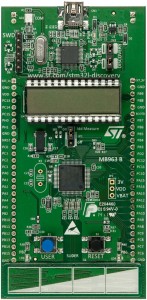Arduino PPT Solar Charger
A conversation I had recently got me on the topic of solar energy, and introduced me to something I hadn’t heard of before: maximum power point tracking. The basic idea is solar cells exhibit a complex non-linear relationship between illumination, temperature and resistance. This is usually represented by an curve that (for a given temperature and level of illumination) shows the relationship between current and voltage. Let’s swipe the diagram from wikipedia:
To maximize the transferred power, we want to maximize the power of the solar cell. This means operating the DC/DC converter at the particular point along the I-V curve where the area under the rectangle is maximized. Tim Nolan has designed a pretty cool circuit that when combined with an Arduino can do precisely that:
timnolan – Arduino PPT Solar Charger.
The details of the design are a bit beyond me at the moment (I’ve studied it for about 20 minutes) but the basic idea is to sample the voltage (via a voltage divider) and the current (derived from the voltage drop across a very small current sense resistor, amplified by an op amp), and then use the PWM capabilities of the Arduino to serve as a switching dc/dc converter. Very neat little circuit. I’ll study it more in the future.






I recall burning three or four weeks of a sabbatical getting Saccade.com on the air with Wordpress. So much tweaking…